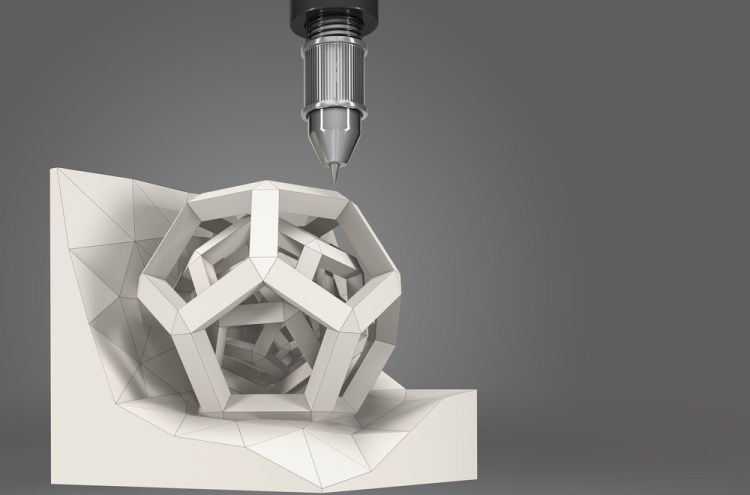3D printer company MakerBot has revealed a tie-up with crowdsourced printing network 3D Hubs that aims to bring 3D printing to designers without their own dedicated machine — which basically means most people.
More specifically, the partnership will see MakerBot’s Thingiverse design community portal connected with more than 15,000 3D Hub printing locations globally, letting Thingiverse users send their design files directly to a compatible 3D printer nearby.
This move is designed to ease the friction for designers who may only have an occasional need to 3D-print their creations, or for those who simply can’t afford to buy a 3D printer themselves.
Launched in 2008 by MakerBot cofounder Zach Smith, Thingiverse has grown to become one of the chief go-to places for all things 3D printing, with designs emanating from the platform “encouraged” to be made open for anyone to use or alter.
Based out of Amsterdam, 3D Hubs lets 3D-printer owners list themselves on its platform and include their full prices.
Even though it may seem counterintuitive for MakerBot to enter such a partnership when it sells 3D printers, the deal does make sense. It’s all about nourishing the still-fledgling 3D printing industry and creating a buzz around it. Those who can experience firsthand the benefits of 3D printing may later go on to procure their own machine.
“Working with 3D Hubs is a natural next step as we continue to grow our MakerBot 3D Ecosystem,” explained Joey Neal, chief experience officer at MakerBot, in a press release.
Back in February, Autodesk CEO Carl Bass said that 3D printing was “way overhyped” for home use, and he may have a point. What MakerBot is doing here is making the technology more accessible to people to use from their home, even if they can’t use it in their home.
“At MakerBot, we are continuing to look for ways to get 3D printing into the hands of more people,” continued Neal. “3D Hubs has built an incredible network to fulfill 3D prints locally, which we see as a natural fit for integration into the Thingiverse community.”
For now, a handful of Thingiverse designers will be adding a “Get This Printed” button to their designs, letting anyone order a print for delivery within a couple of days. Interestingly, designers can also now be paid for their work, though it’s entirely optional — during the checkout process, users are invited to “tip” the designer. This is the first time anyone has been able to monetize their designs through Thingiverse.
Earlier this month, MakerBot revealed it was “reorganizing” its business, which basically meant losing some staff and closing its three MakerBot retail outlets. With these changes, the company said it was refocusing its efforts on “improving and iterating our products, growing our 3D ecosystem, shifting our retail focus to our national partners and expanding our efforts in the professional and education markets.” By making it easier for anyone to print physical products, it will go at least some way towards achieving these goals.
Today’s news also comes hot on the heels of Mattel’s announcement yesterday that it was partnering with Autodesk to let kids create and 3D print their own toys. This followed shortly after Warner Bros.’ unveiling of Lego Dimensions, a Lego-based hybrid of toys and video games. Players can buy Lego pieces that are used to build characters and other “things” that appear in the game.
While 3D printing may still be in its infancy from a consumer perspective, it’s clear there’s a big push across the industry to bring the technology to more people.
VentureBeat's mission is to be a digital town square for technical decision-makers to gain knowledge about transformative enterprise technology and transact. Learn More


